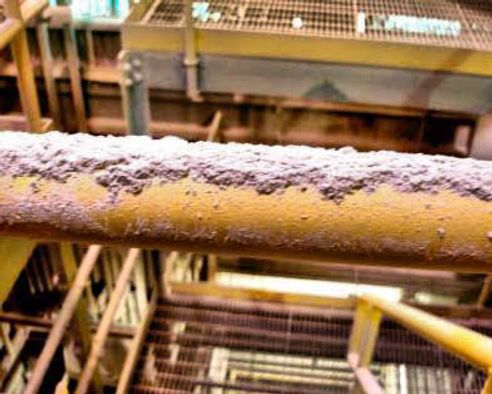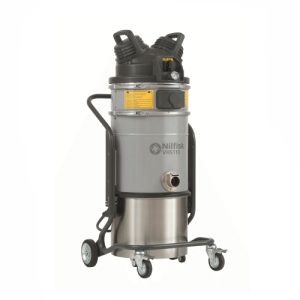Combustible Dust Risks in Food Facilities
Combustible dust is defined by WorkSafe as solid material comprised of distinct particles, regardless of their shape, size or chemical composition.
Combustible dust is extremely hazardous and can create flash fires and explosions when it is suspended in the air and comes into contact with oxygen and a heat source. Depending on the severity, these fires and explosions can lead to serious worker injuries and even death.
The risks from combustible dust are an issue in many processing industries, including the food industry.

What Are Combustible Dust Risks in Food and Grain Facilities?
Dust from flour, grain, sugar, alfalfa, herbs, hops, pulp and more are considered combustible in food facilities. Grain dust is particularly explosive when it becomes airborne or accumulates near an ignition source.
The Most Overlooked Dust Risks
Food processing facilities, like most facilities, collect more dust than most people realize. It is when these risks are overlooked that potentially serious hazards may arise. Areas of high dust accumulation risk include:
Walls Collecting Combustible Dust
Walls are likely the most overlooked risk in food facilities. Because combustible dust can be generated by a wide range of sources, anything from flour to pulp dust raises the risk of a hazardous situation.
This dust can get into the air and stick to the walls very easily. If the walls are not cleaned regularly, that dust will steadily accumulate until it becomes a serious safety issue that can result in a fire or explosion.
Vents and Small Spaces
Another area of combustible dust accumulation risk often overlooked in food facilities are the vents and other small spaces. Like with walls, dust suspended in the air can travel and stick to vent covers, which can then push some particles back into the air if the vent gets clogged.
Even if they are unclogged, dust can also travel through vents to other parts of the facility, which can lead to issues of cross-contamination. The dust can also end up near heat or electrical sources, which poses a serious fire and explosion risk.
Heat and Electrical Sources
One of the key components to dust fires and explosions is a heat source. If dust penetrates these areas where heat is present, or where friction with moving parts can cause sparks, it creates the perfect environment for a dangerous situation. There are countless heat and electrical sources within food facilities, so the risk of dust penetrating these machines is incredibly high.
Combustible Dust Collection and Storage Devices
Another area of overlooked dust risk is dust collection containers and storage devices, like dumpsters, storage containers and silos. These are areas of a facility that are sometimes poorly maintained and are rarely inspected.
As a result, waste, products and dust can leak through and travel in the air to other areas of the facility. That airborne dust can end up anywhere, including an area where the risk of combusting is more likely, such as near heat or electrical sources.
Misaligned Conveyor Belts
A misaligned conveyor belt can also create a hazardous situation when combustible dust is concerned. When a conveyor belt becomes misaligned, it does not run as smoothly, which creates friction.
Friction can end up leading to sparks, which can land on any of the material on the belt — products that may still have dust residue on them — resulting in a fire at best and an explosion at worst.
Nilfisk VHS 110 EXA Z22
 Single phase industrial vacuums for use in Atex Z22 locations.
Single phase industrial vacuums for use in Atex Z22 locations.
The VHS110 Z22 is the innovative single phase industrial vacuum cleaner suitable for Atex Z22 locations. Thanks to the brushless motor, this machine ensures high performance. Moreover it needs less maintenance and is suitable for continuous use. The innovative PullClean system effectively cleans the antistatic star filter while the vacuum is running, without the need to stop working.The optional HEPA14/ULPA15 upstream filter is the perfect choice when collecting fine dusts. The modular design makes it extremely easy to service and upgrade in the field. With its 400 mm diameter the VHS110 ATEX is a compact in order to be easily used everywhere, but has a good capacity thanks to its 37 litre removable container. The simple design makes it easy to clean and sanitise.
Specific versions for additive manufacturing available.
Click here to request more information and pricing for commercial and industrial vacuums that can help you work with Combustible Dust.
Like most businesses we’re social – you can follow us on: Facebook, Instagram, LinkedIn, Twitter
Follow us and we’ll follow you, now that’s social.
